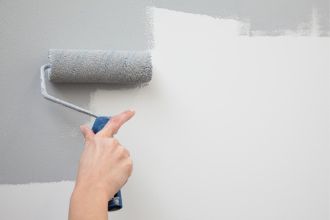Paint filler for walls : how to use filler on walls ?

In renovation, prepararing the surface is the first key step, especially on a previously painted wall. Correct diagnosis of the painted surface means checking that the wall is sound, clean, dry, cohesive and hard, before starting work. It also determines whether washing or another treatment are needed. Following that, a filler can then be used to fill the holes and cracks. Finally, the surface can then be covered with a levelling or smoothing filler to really perfect the finish and obtain a high quality result.
Preparing the surface before filling
For the best results that will last, the substrate must be sound, clean, hard, cohesive and dry. Depending on the problems you find, you may need to brush, dust, scrape away loose parts, treat, then finally fill holes and cracks, apply a finishing coat if desired, sand and dust.
Treating a damp surface
This is undoubtedly the most problematic problem to manage. If there are traces of mould or fungi on the substrate, the source of the problem must be treated before starting any work. There can be many causes: a poorly ventilated or poorly insulated room, water infiltration...
To prevent the filler and any subsequent coverings being affected, work should not be started until the source of humidity has been found and permanently stopped.
Clean dirt from the substrate
While it’s not imperative to always wash walls, it is strongly recommended to wash dirty walls and painted walls, to remove dirt and traces of grease that may have accumulated over time. This helps with the adhesion of the filler and paint.
If you have removed wallpaper, washing is also necessary to remove all traces of glue. Make sure the surface is fully dry before you move on to filling.
Scrape and open up rough spots
If the surface has signs of loose parts (blisters or peeling paint, for example), scrape off the rough surface using a suitable tool, then brush and sand. At the same time, open up any cracks that are to be filled to create a ‘gutter’, this will help make sure they can be filled to the bottom when the time comes.
Treating a soft or chalky wall
If the tip of a screwdriver can penetrate the wall fairly easily, the substrate is too soft. If your hand is white when you rub it against the wall, it is what’s known as ‘chalky’.
In both cases, this can be treated with a Toupret Wall Hardener. This liquid solution can be applied with a brush or roller. It secures the materials that have become soft and fixes the powdery parts. Toupret’s Wall Hardener also strengthens the adhesion of fillers and paints applied over it.
What about preparing a painted wooden surface?
Preparation for a painted wooden surface (e.g. skirting, sills, architraves) is very similar to painted walls or ceilings. Before applying a filler, the surface should be prepared in the same way to make sure it is hard, cohesive, clean, healthy and dry.
To fill over an interior painted wooden surface, you should opt for a product designed for wood, such as Toupret’s Wood Hardener or one of Toupret’s wood fillers.
To find out more about our fillers that can be applied manually or by spray machine, have a look at our online catalogue. You will find the technical data sheets for all our fillers and many tips to support your work on site, such as a product selector tool, and a quantity calculator to estimate your product quantities.

